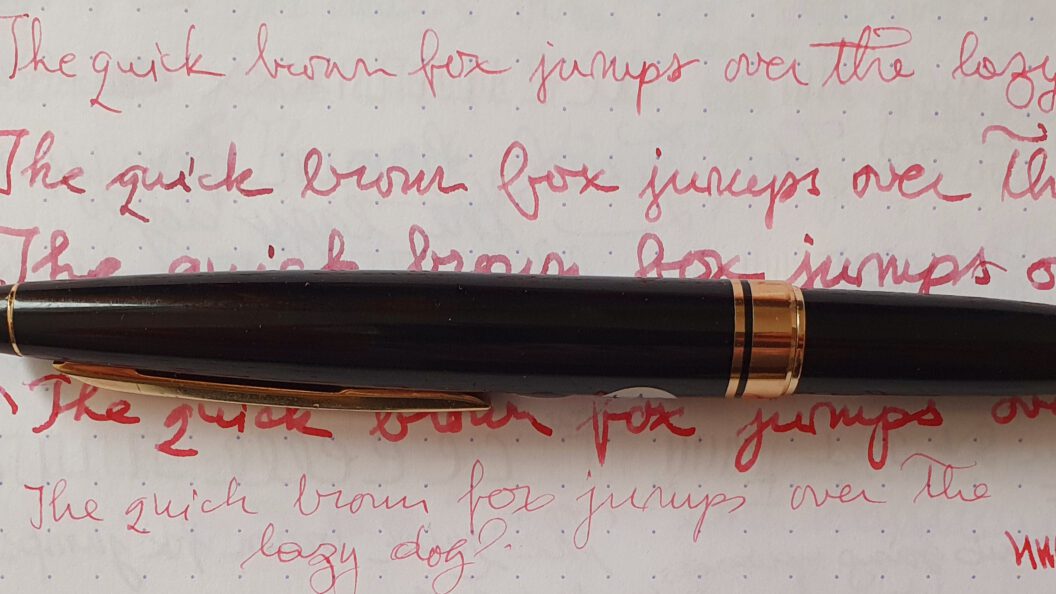TL;DR: In the 1970s, Sailor made its Mini line with 21k-gold nibs. Better, they equipped these pocket pens with various nibs, of which the Zoom is the nib that produces different strokes depending on the writing angle: Hold the pen higher, closer to the vertical, and it writer thinner; hold the pen closer to the ideal hold at 45- to 50-degrees, and it writes thicker. Here is such a Sailor Mini 21 with Zoom nib.
Fluid experience (Figures 1 and 2): Working with a 1970s Sailor Mini 21 with Zoom nib is challenging but fun. The pen leaves strokes of width dependent on the angle of writing, that is, the angle at which the pen is held, relatively to the paper. So learning to control the stroke width is like learning how to write (again). Reverse writing also works, but produces little line variation.
All in all, the stroke range is excellent: from fine and extra fine (on reverse, dry stroke), to fine to medium (hold at 90 degrees, perpendicular to the paper, like a Japanese paintbrush, to get a somewhat wet stroke), to medium to broad to double broad (hold at different angles, wet stroke). With a bit of pressure, because the pen is wet, one can also get broader strokes, around the triple broad (1.3-1.5 mm).


What makes the nib so special? The cut! (Figures 3a, 3b, and 3c): The Zoom nib on this pen is sturdy, almost hard, so all line variation is achieved through writing angle. To achieve this, the nib consists of a large blob or hard material (iridium? another alloy?), cut diagonally and rounded off the edges.
The diagonal cut at about 45-degrees gives the very large stroke under the normal writing angle. Any other angle uses less the large flat part created through the diagonal cut and more the edges. The edge-rounding and further polishing of all areas lead to smooth writing.
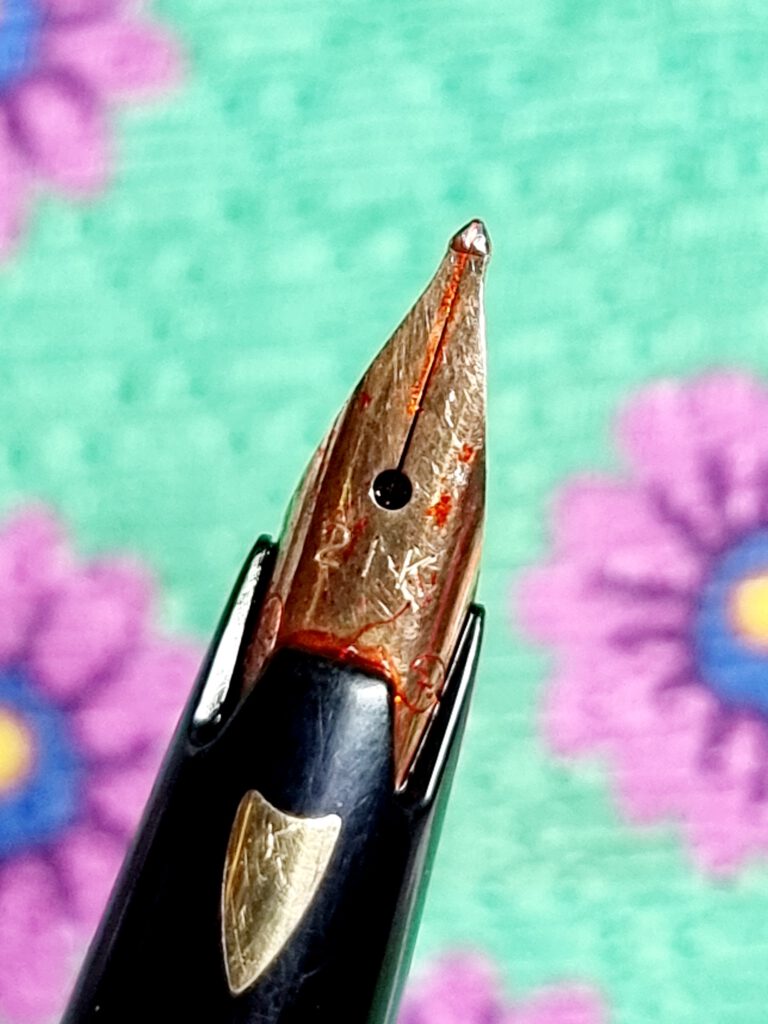
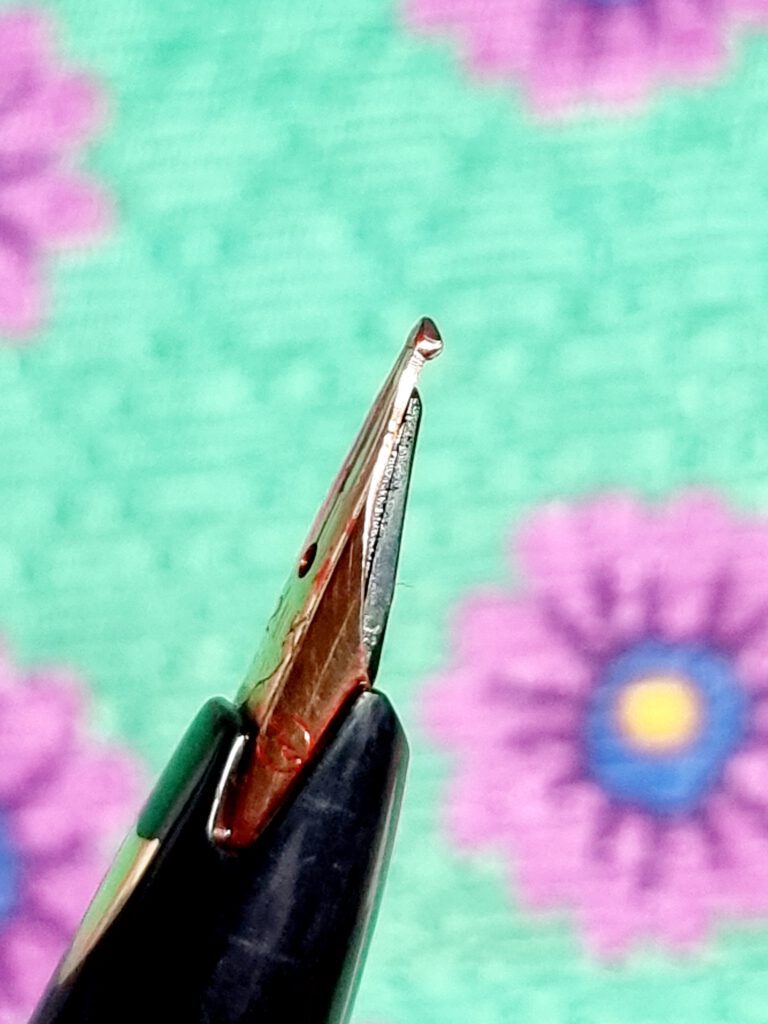
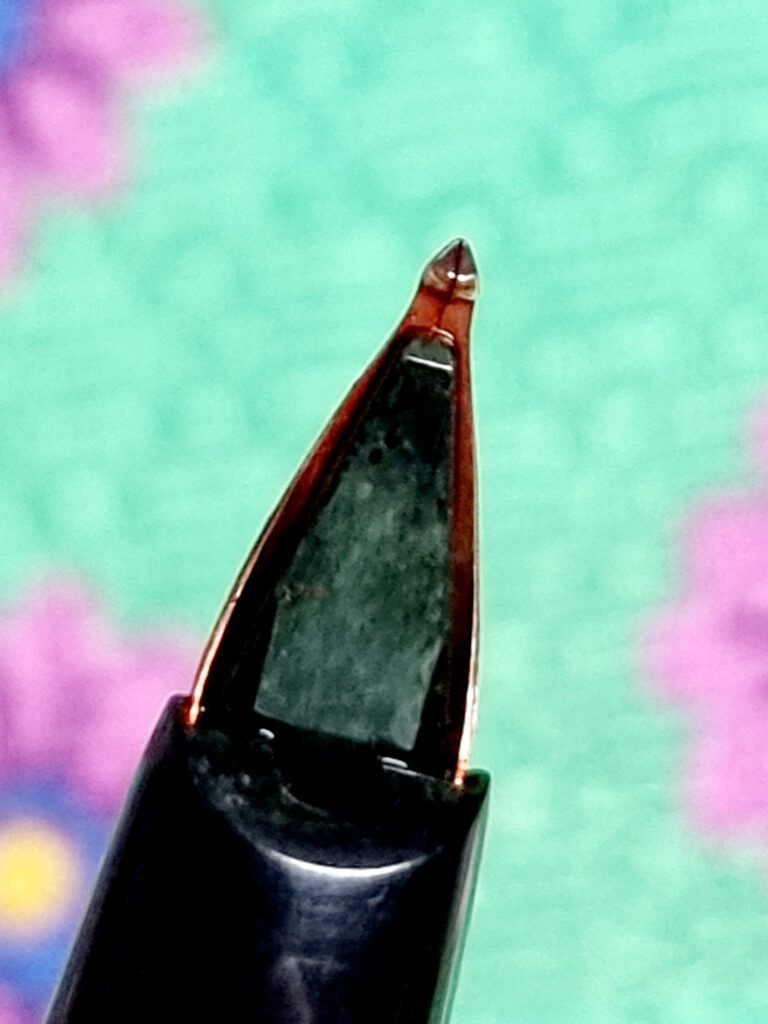
I want to know more about this pen! (Figures 4 and 5) Well, it’s a pen made in the 1970s, part of the main line of (pocket) pens sold by Sailor. In a line-up in that period that include plastic, anodized aluminum, and stainless steel bodies, this pen is made of plastic. Out of the many colors available, which included black, (dark) red, (dark) green, etc., this pen is made in black with gold-trim, which I find stylish.
The nib is made of 21k yellow gold, which places the pen among the more expensive in the line. Similarly priced alternatives were made with 18K white gold. More expensive was only the Karat War star of the Sailor lineup, the Mini 23 with a 23K yellow gold nib.
This pen features a broad band next to a narrow band, both gold-trimmed, and together with the small gold-trimmed zogan on the grip it indicates this was the expensive model of Sailor Mini 21 at the time.
All in all, this Sailor Mini 21 cost ¥3,000, with the cheaper variant — also black, two narrow bands, no zogan, likely also not with a Zoom nib option — priced at ¥2,000, and the top-of-the-line Mini 23 — also not with a Zoom option — priced at ¥5,000.
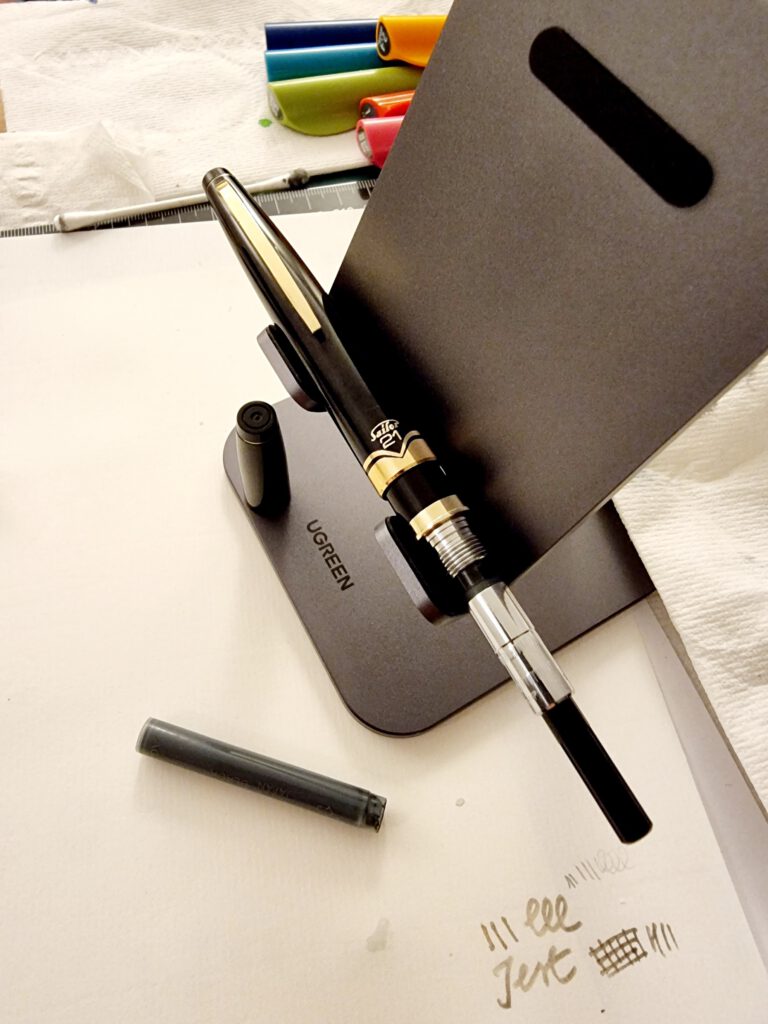
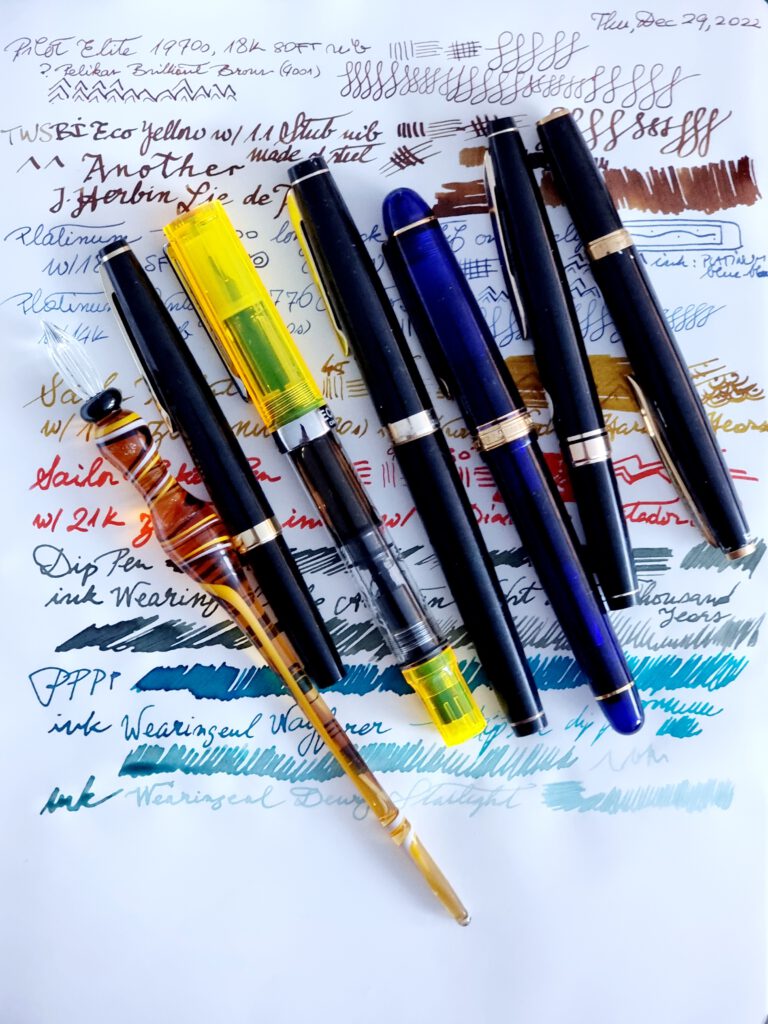
(Image explained in the post One Page After Christmas.)
To conclude: It’s excellent! (Figure 6)
The Sailor Mini 21 of the 1970s is an excellent line of (pocket) pens. The Zoom nib is a delight, albeit, an acquired taste. Its ability to lay down broad (and broader) strokes at one angle, and fine to extra fine at another, makes it a versatile nib.
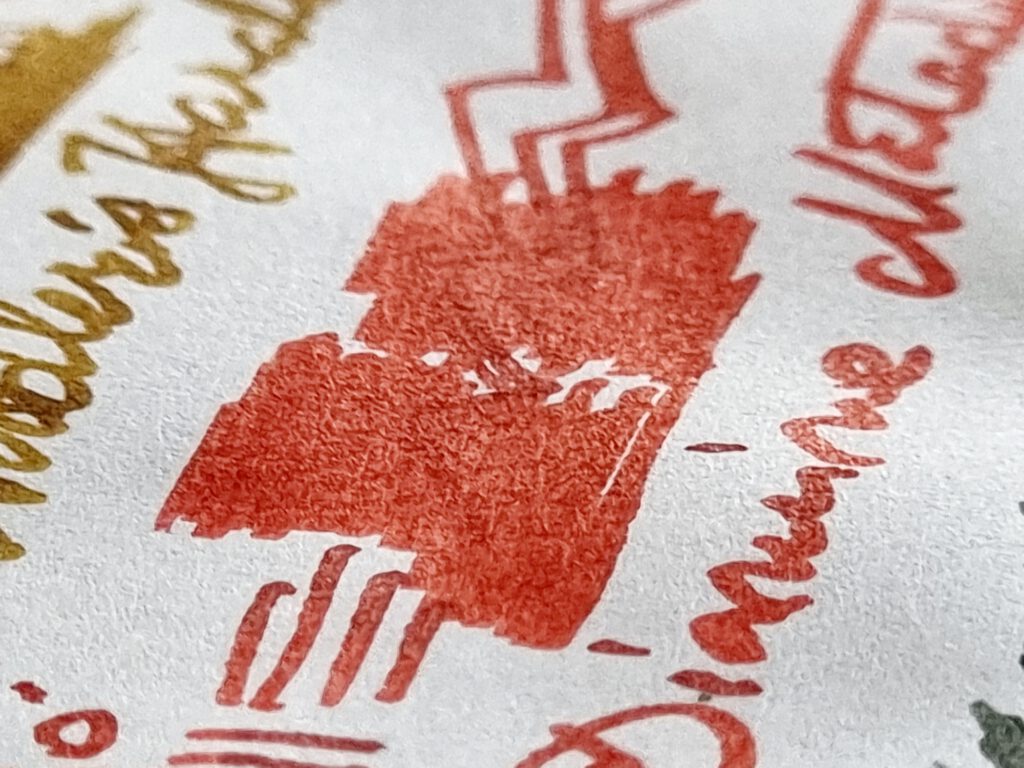
Enjoy the day!

